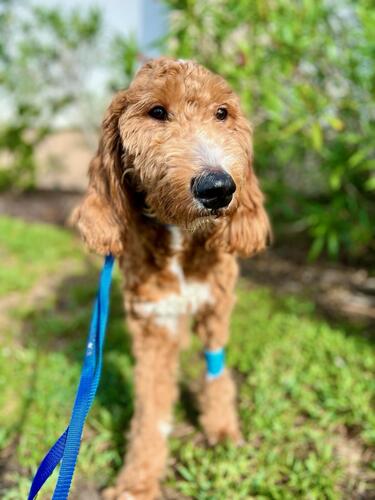

3 Ways You Can Prepare Your Home to Welcome a Rescue Dog
Approximately 4.1 million shelter animals are adopted each year, two million of which are dogs, according to the American Society for the Prevention of Cruelty to Animals (ASPCA). For those who are planning on adopting an older dog that may have a history of trauma and abuse, however, knowing the many ways to prepare your home and even your yard is essential in maintaining a safe and comforting environment. Whether this is your first time adopting a dog or your first rescue altogether, here are just three smart ways you can prepare your home inside and out.
Recognizing the signs of trauma
While ensuring you have the essential supplies on hand is a great way to prepare for your new furry addition, being able to recognize signs of trauma and your dog’s triggers is essential when welcoming a rescue to your home. Lori Teller, an associate professor in the Texas A&M University School of Veterinary Medicine & Biomedical Sciences notes that “The symptoms of PTSD in dogs are similar to those in humans and include chronic anxiety; hypervigilance; avoidance of certain people, places, or situations; sleep disturbances; fear of being alone; decreased interest in a favorite activity; or aggression.” Teller goes on to mention that “The best ways to manage PTSD in dogs will be a combination of behavioral therapy and medication,” highlighting the importance of a vet visit.
The value in a comforting (and safe) environment
When planning to bring home a dog that has experienced trauma, ensuring that you create an environment that feels safe and is comfortable can be a great way to welcome them to their new home, and can aid in easing the transition from the shelter. In addition to the typical supplies (bowls, leash, collar, toys, etc.), having a comfortable bed and blankets on hand can help, too. Pia Silvani, CPDT-KA, CCBC, and director of ASPCA behavioral rehabilitation tells Bustle, “Getting used to a new environment full of new objects, people, smells, and sounds may overwhelm the dog.” With that in mind, even the smallest of things — such as ensuring that the dog’s collar fits properly and has ID tags with your contact information — can aid in creating a safer environment right off the bat. Silvani also mentions the importance in creating a comfortable spot for the dog, which can make a big difference for those who may have experienced a lot of trauma. “Prepare a comfy, private space,” Silvani recommends, with covering a crate with a blanket in a quiet part of the home being a great way to do just that in addition to decreasing anxiety.
While medication and therapy may be needed for a rescue dog with a troubled past, having patience and building confidence and trust can certainly help. Nowfresh.com notes that understanding your dog’s trauma triggers will aid in helping avoid stressful situations — whether it be loud noises or unfamiliar visitors. With that in mind, the site further points out that establishing a routine can help in bringing in a sense of safety, as rescue dogs have oftentimes gone through a significant amount of change and “have lost a sense of safety and security.”
Creating a safe backyard
With routines being an important aspect of successfully welcoming a rescue dog into your home, activities like regular walks or games of fetch outdoors can be a great way to bond. To do that, however, ensuring that you puppy-proof your yard is important, as the presence of certain plants, such as daffodils, tulips, and English ivy are just a few known to be poisonous to dogs. If you’re not exactly sure what plants you have, boxing off your garden will restrict your dog’s access to it, and will give you ample time to survey your plants. Using artificial turf to cover up larger areas and eliminate the presence of harmful plants is a great way to keep your dog safe; and you can of course include other dog-friendly herbs such as lavender, rosemary, and sage.
Installing a fence can also aid in making your backyard a safer place for your rescue, especially should they try to run away. That said, a fence will not only confine your pup to your backyard but will prevent them from becoming vulnerable to other dangers outside, like traffic or a neighbor’s potentially toxic plants. When looking into the type of fence to install, the Spruce Pets notes that avoiding underground or invisible fencing is always a great idea, stating that these can leave your pup vulnerable to dognappers and don’t stop a motivated dog from trying to run away.
Preparing for your rescue dog’s arrival can be an exciting thing, though it’s essential to prepare your home beforehand — especially if your new pup may have had a history of trauma. From the value in providing a safe and comfortable home (as well as a visit to the vet) to ensuring that your backyard is a safe environment, you can help ensure a successful transition.
Previous Article
Next Article